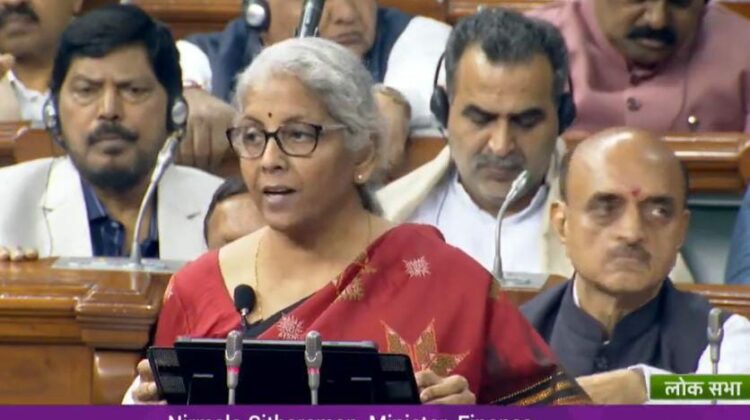
FM Sitharaman eyes higher GDP growth target
NEW DELHI : Anticipating better economic expansion, the Finance Ministry is likely to increase its nominal gross domestic product (GDP) growth target for FY25 in the upcoming Budget from its assumption of 10.5 per cent in the Interim Budget in February.
“The nominal GDP growth assumption for FY25 may be revised upwards on higher growth expectations. It is likely to be 10.5 per cent to 11 per cent,” a senior government official said.
Nominal GDP, calculated at current market prices, factors in the effect of inflation and is used as the base to calculate crucial macroeconomic indicators, such as tax buoyancy, fiscal deficit, revenue deficit, and debt-to-GDP ratio.
A higher nominal GDP assumption makes it easier for the finance minister to show a narrower fiscal deficit print and vice versa.
In FY20, the final Budget revised the nominal GDP growth target to 12 per cent from 11.5 per cent assumed in the interim Budget.
However, for FY15, despite a change in government, the finance ministry kept the nominal GDP growth rate unchanged at 13.4 per cent.
Aditi Nayar, chief economist at ICRA Ratings, expects nominal GDP to rise 10.8 per cent in FY25.
“This entails acceleration from the 9.6 per cent growth seen in FY24, which is largely driven by our projection of a turnaround in the average WPI (wholesale price index) to an inflation rate of 3.3 per cent in the ongoing financial year from a deflation of 0.7 per cent in the previous year.
“Based on transient headwinds that are expected to dampen GDP growth in H1, we are projecting the FY25 real GDP expansion at 6.8 per cent,” she added.
India’s WPI-based inflation rose sharply to a 15-month high of 2.61 per cent in May on the back of an adverse base effect and a sharp spike in food prices.
The Reserve Bank of India in its latest monetary policy review, released last month, raised its real GDP growth forecast to 7.2 per cent for FY25 from its earlier estimate of 7 per cent.
Real GDP is calculated by subtracting GDP deflator from nominal GDP.
The GDP deflator is a weighted average of inflation rates based on the WPI and consumer price index (CPI) with a higher weighting for the WPI.
The FY25 Interim Budget assumed nominal GDP for FY24 and FY25 at Rs 296.6 trillion and Rs 327.7 trillion.
However, with the provisional estimates of GDP released on May 31, nominal GDP for FY24 was revised downward to Rs 295.4 trillion.
If the finance ministry chooses to keep the FY25 nominal GDP print unchanged, imputed nominal GDP growth for FY25 will be 10.95 per cent due to a lower base effect.
Devendra Kumar Pant, chief economist at India Ratings & Research, said with the lower FY24 base, an expected higher deflator, and real economic growth looking better, the Budget may assume nominal GDP growth closer to 11 per cent.
“The rate at which the economy has grown last year has surprised everyone. Though the GDP-GVA (gross value added) differential is unlikely to be as high in FY25 as in FY24, GVA growth will be better in FY25 than in FY24,” said Pant.
“The farm sector is likely to grow faster in FY25 and lower retail inflation will boost real wage and consumption,” he added.
However, Madan Sabnavis, chief economist at Bank of Baroda, said the government was unlikely to revise the nominal GDP growth (10.5 per cent) figure to be used in the Budget for FY25.
“While the base effects will be in play, real growth is to be higher than expected and hence a neutral unchanged stance can be expected,” he added.

